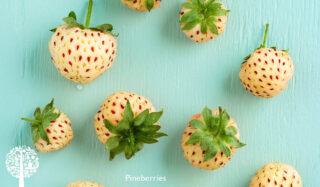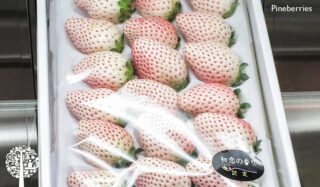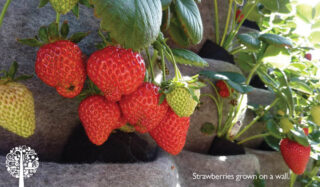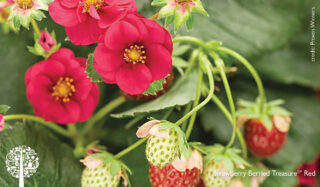Growing Strawberry Plants In Containers
You can easily grow and harvest sweet and delicious strawberries in a container on your terrace or patio!

Some strawberry varieties produce fruit mainly in June, while other cultivars, like Delizz®, fruit throughout the summer. There are also attractive strawberries with red, pink, or white flowers. Cultivars ‘Gasana’, ‘Rosalyne’, ‘Ruby Ann’ and ‘Toscana’ have pink-colored flowers that become sweet-tasting conical fruits. Berried Treasure®’ Pink’ and ‘Red’ produce magnificent double pink flowers all summer long, turning into tasty red fruits.
I also recommend giving alpine strawberries a try. This floriferous strawberry plant continuously produces from late spring through fall. The berries are delicious and are elongated and red or yellow, depending on the variety. This compact perennial does not form runners like other strawberries and is hardy up to zone 3.

Often called pineberries, ‘Keoki’, Natural Albino®, and ‘White Carolina’ are quite unusual strawberry cultivars that produce white fruits covered with tiny red seeds in early summer. Some say the flavor of these fruits is reminiscent of pineapple. This strawberry type is not self-fertile, so it is necessary to plant it with one or two other strawberry plants to ensure pollination.
Some people are allergic to red strawberries. White strawberries lack the protein that constitutes the red pigment responsible for allergies, so a person affected with such aversions can likely eat white strawberries. Be careful and make sure that you test this theory under medical supervision.
Adaptable Plants
Strawberries are very adaptable plants that can grow in various soil types as long as they are light, cool, and well-drained. When planted in clay soil, it is best to add compost to lighten and soften the growing medium. Slightly acidic soil will provide better harvests.
You can prune the rhizomes – a creeping stalk emitted by most strawberries – to prevent plant depletion and improve yields.
Strawberries Everywhere, Even On Walls!
Since strawberries don’t need much space, they can be grown in a hanging basket, in a flower box, or even on a green wall!

You can buy upright cylindrical containers with multiple holes, called strawberry towers, in which strawberries grow exceptionally well. You can easily make a strawberry tower yourself from an old, reclaimed plastic pipe.
The easiest way to grow strawberries on a patio or a terrace is in containers. Plastic or terracotta pots can do the trick, but in my opinion, it is best to plant them in geotextile pots. These thick fabric containers provide better insulation for the roots during winter.
In Canada and the northern parts of the US, increase your strawberry plant’s chances of survival by watering thoroughly in October. Rather than leaving them on the balcony or terrace, move them to the ground before the end of November. Covering them with fallen leaves or snow acts as insulation.

Although necessary to replace some strawberry plants every three years – or every year if they have not survived the winter – it is best to provide them with a rich, high-quality growing substrate made of compost and sphagnum peat moss.
Grey mold, a common disease
The greyish-white mold covering the foliage and fruit of some plants is a symptom of a disease called grey mold, caused by a fungus called Botrytis cinerea. This disease, which develops in humid weather, is prevalent in strawberries.
To prevent the onset of this disease, space plants appropriately to improve aeration. Reduce watering or install a drip irrigation system that will not wet the foliage. In the fall, cut the stems and leaves of affected strawberries and throw them in the garbage.
Add compost to any strawberries that have been affected by botrytis the following spring. If grey mold reappears during the next summer, limit the spread by spraying the plant two or three times with a copper-based fungicide, such as Bordeaux mixture. Although this fungicide is tolerated in organic farming, the copper sulfate in the Bordeaux mixture is toxic. Use as a last resort only.




